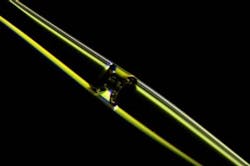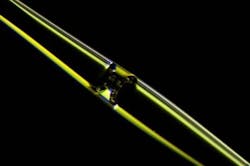Sensor pairing two optical methods shows promise for high-speed disease detection
Scientists at the University of Illinois (Champaign, IL) have developed a highly sensitive sensor that combines two optical methods, with the goal of enabling new high-speed disease detection.
Related: Advances in optical biodetection
Recognizing that current diagnostic tools are not sufficiently fast or sensitive to detect properties such as compressibility and viscoelasticity in infected cells, the research team designed their sensor by combining two optical sensing technologies, flow cytometry and mechanical sensing. The optofluidic device, explains doctoral candidate and first author Kewen Han, optically detects the mechanical perturbations created by individual microparticles flowing through the fluidic channel at very high speed.
Han, along with Gaurav Bahl, an assistant professor of mechanical science and engineering at the University of Illinois, and colleagues tested their optofluidic resonator, measuring the density and compressibility of particles as small as 660 nm as they "whizzed" by the sensor.
Full details of the work appear in the journal Optica; for more information, please visit http://dx.doi.org/10.1364/OPTICA.3.000585.

